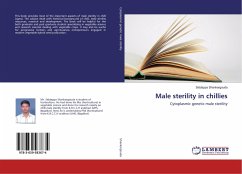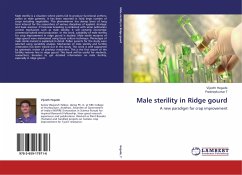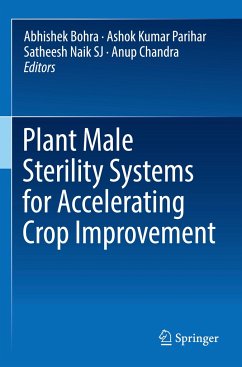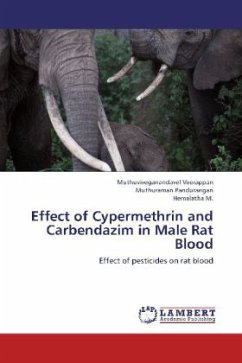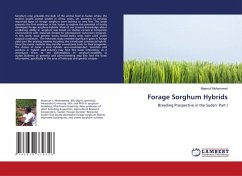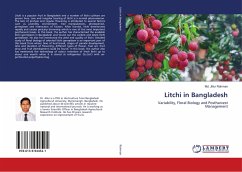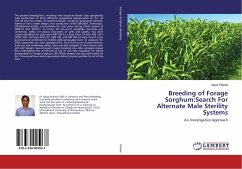
Breeding of Forage Sorghum:Search For Alternate Male Sterility Systems
An investigative Approach
Versandkostenfrei!
Versandfertig in 6-10 Tagen
49,99 €
inkl. MwSt.

PAYBACK Punkte
25 °P sammeln!
The present investigation, involving nine Sorghum bicolor type cytoplasmic male sterile lines of three different cytoplasmic backgrounds viz. A1, A2 and A3 and five testers of Sorghum bicolor- Sorghum sudanense derivate, mated in line x tester design, was conducted at the GBPUA&T, Pantnagar, Uttarakhand (India), consecutively for two years during Kharif season of 2009-10 and 2010-11, to know the extent of variability, heterosis and combining ability for various characters of yield and quality. Two best crosses identified for yield were MR 750 A2 x Pusa Chari 23 and A3N 193 x UPMC 503. The line...
The present investigation, involving nine Sorghum bicolor type cytoplasmic male sterile lines of three different cytoplasmic backgrounds viz. A1, A2 and A3 and five testers of Sorghum bicolor- Sorghum sudanense derivate, mated in line x tester design, was conducted at the GBPUA&T, Pantnagar, Uttarakhand (India), consecutively for two years during Kharif season of 2009-10 and 2010-11, to know the extent of variability, heterosis and combining ability for various characters of yield and quality. Two best crosses identified for yield were MR 750 A2 x Pusa Chari 23 and A3N 193 x UPMC 503. The lines A3N 213, A3N 193, and MR 750 A2 were found to be good general combiners for fodder yield and quality traits. To compare the effect separately for each cytoplasm (A1, A2 & A3) on per se performance, heterosis and combining ability, data was also analysed in three factor split-split plot design. Several good crosses involving non milo cytoplasm based lines, highlighted the worthiness of use of non milo cytoplasm for hybrid development in forage sorghum. SDS-PAGE analysis was also performed for the 14 parental lines which generated distinct protein profiles for all of the lines.



